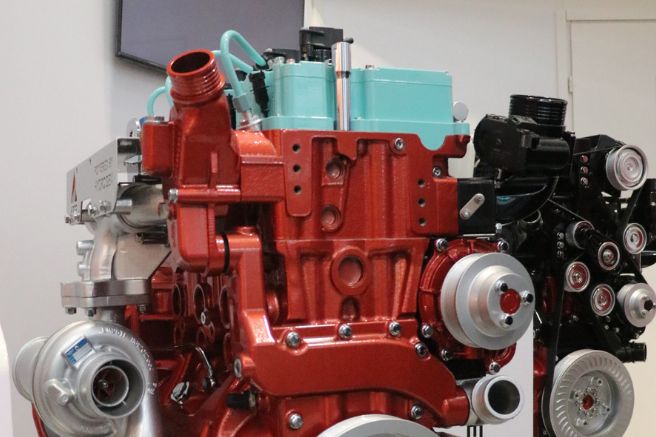The first vintage Lamborghini tracked tractors produced by Lamborghini, built between 1955 and 1961, had the unique feature of being available both in the classic grey/red two-tone color scheme and in an attractive “gold-yellow” livery
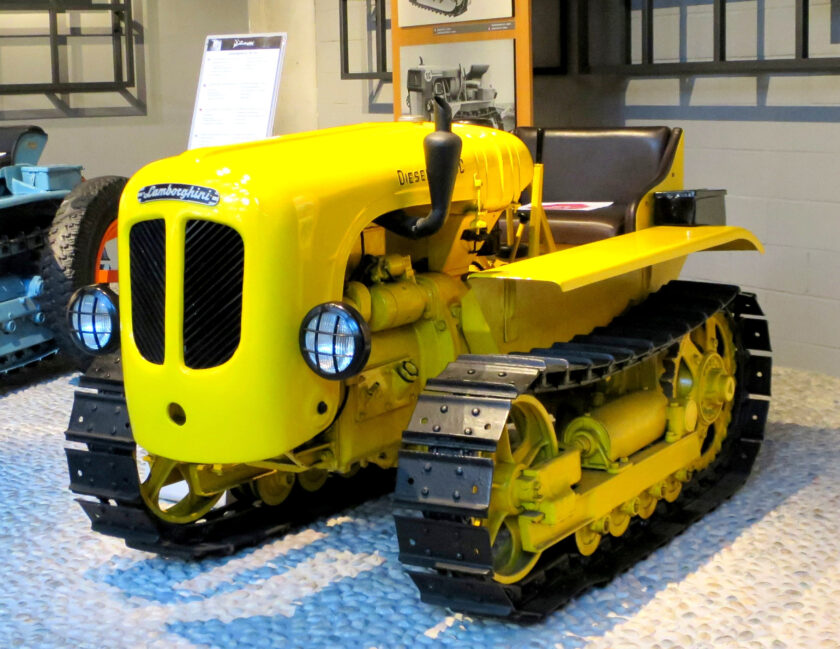
Massimo Misley
Excluding the carioche, the first tractor built by Lamborghini was the “L 33” model, produced in 1951. The history of the company founded by Ferruccio Lamborghini is therefore relatively recent, especially when compared to Fiat (which began in 1918), Landini (1928), and Same (shortly after). Nevertheless, in the collective imagination, Lamborghini tractors have always existed, and the brand is synonymous with innovation and performance.
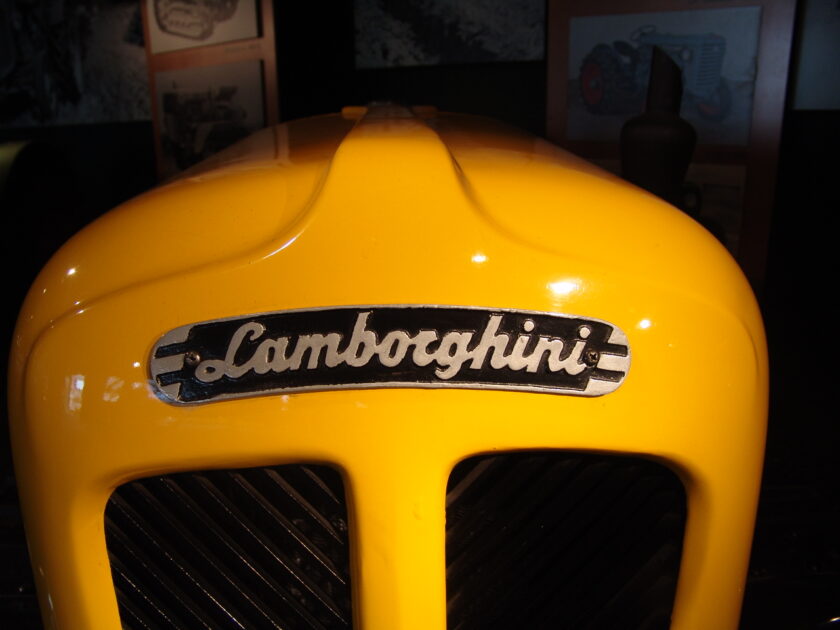
A reputation earned in the field—well-deserved and confirmed by the company’s crawler versions, machines Lamborghini began producing in 1955, before Same and Landini, with the model “DL 25 C.” This was intended to enter a market segment then dominated by Fiat’s “700 C” from 1932 and its 1939 evolution, the Boghetto “40.” Those were outdated machines compared to the Lamborghini crawler but were also cheaper and equipped with four-cylinder engines, unlike the long-stroke, two-cylinder MWM “KD 12-Z” engine chosen by Lamborghini, producing 26 horsepower.
For these reasons—and also due to a sales and service network that could not compete with the competition—the “DL 25 C” did not achieve the hoped-for success. This prompted Ferruccio Lamborghini to react quickly by launching the “DL 30 C” in 1956. Compared to the “DL 25 C,” the new model had eight more horsepower, still from a two-cylinder engine but with a displacement of 1,810 cc instead of 1,700 cc. Offered at a highly competitive price, the “DL 30 C” featured the same attractive and innovative bodywork as its predecessor—the first example of design applied to a crawler tractor—concealing reliable mechanics that were easy to maintain, thanks to the rational placement of all functional components.

The design of the front grille, proudly displaying the Lamborghini badge, was also appealing, and the finish and assembly were of a higher class. What truly surprised operators, however, was the livery: a brilliant “gold-yellow,” likely chosen to visually distinguish it from the “DL 25 C” (which remained in production), and especially from the competition. This marketing move proved effective, allowing the company to sell over 200 tractors in the first year of production alone.
The model’s success was certainly also due to the reliability of its mechanics, beginning with a single-disc clutch that transmitted the engine’s 33 horsepower to a sliding sleeve gearbox with four forward gears and one reverse. The gear lever, located in the center of the transmission tunnel between the two steering clutch levers, followed a car-style pattern. Driving was made easier by the side placement of the brake pedals, which—like the two bands operating on the steering clutch drums—were dry.

The clutches operated spoked drive wheels engaged with 240 mm-wide track chains supported by four double-lip rollers. Tension could be easily adjusted with a wrench, and the entire system was mounted on two independently oscillating frames connected at the front by a robust leaf spring. The PTO was driven by the same clutch as the transmission and operated at engine speed. A side pulley was also provided for running threshers, and the adjustable drawbar, hinged in a forward position, offered good balance during towing. The driver’s seat was particularly pleasant and comfortable, set in an environment that was, all in all, cozy—despite the air filter being located right in front of the operator.
To these advantages were added compact dimensions, with a width of just 124 cm, allowing the tractor to be used in most orchards and vineyards. A narrower version was later produced specifically for vineyards. In the end, the only real criticism of the “DL 30 C” was its engine, built by Lamborghini under license from MWM. The technicians in Cento had lightened the pistons and connecting rods to increase RPM and improve responsiveness, but performance remained somewhat sluggish and slow to rev, partly due to a large flywheel used to smooth out the roughness typical of two-cylinder engines.

Despite this, the machine was well-received, leading Lamborghini to add both the narrower vineyard version and a wider mountain version to the base model. Between 1956 and 1961, a total of 461 units of the “DL 30 C” were produced, compared to 147 units of the “DL 25 C,” which ended its production run in 1958.
That same year, Lamborghini introduced its first crawler with a three-cylinder, air-cooled, direct-injection engine: the “DLA 35 C.” It complemented but did not replace the “DL 30 C.” Also offered in gold-yellow, it featured a 36-horsepower engine at 2,000 RPM, was heavier and more robust, and was produced for four years until 1961, in 101 units.
With this model, the story of Lamborghini’s gold-yellow crawlers came to an end—but not the story of its crawler tractors, which continued with the launch of the “3402 C” between 1960 and 1962, the “3403 C” between 1961 and 1962, and the “4504 C,” a four-cylinder model produced until 1963.
A Mechanic at 14
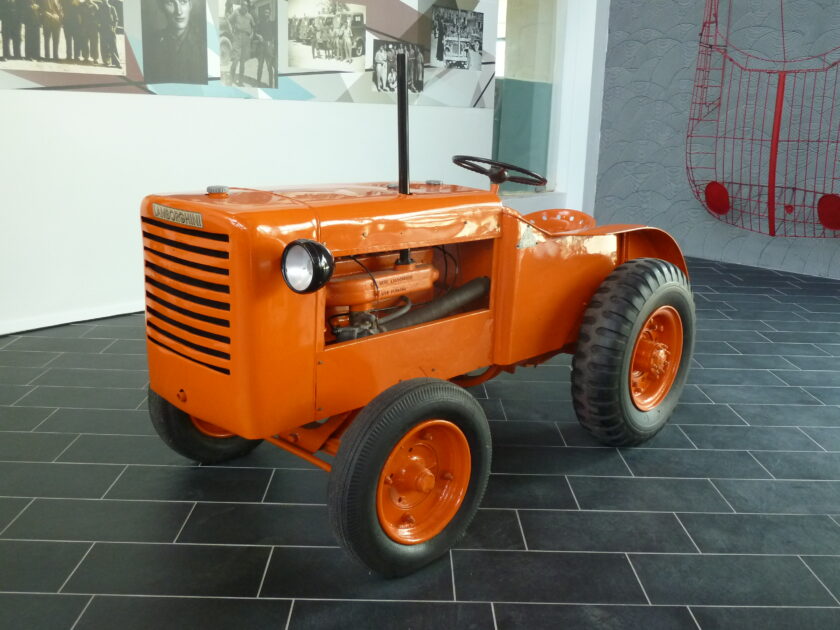
Ferruccio Lamborghini was born under the zodiac sign of Taurus on April 28, 1916, in Renazzo di Cento, in the province of Ferrara. The first of five children in a modest family of farmers, he moved to Bologna at just 14 years old to begin his first experiences in mechanics, working for local companies.
During World War II, he put his skills to use in the Air Force’s “Mixed Maneuver Motor Division” based in Rhodes, Greece, where he specialized in vehicle repair and became familiar with diesel engines. These experiences proved useful after the war, when the Italian government organized “ARAR” (Recovery and Disposal Agencies) depots to collect and auction off military surplus. Lamborghini visited these depots and gathered the components needed to build his first “carioche” in a workshop in Cento, near Ferrara, which he opened in 1948.
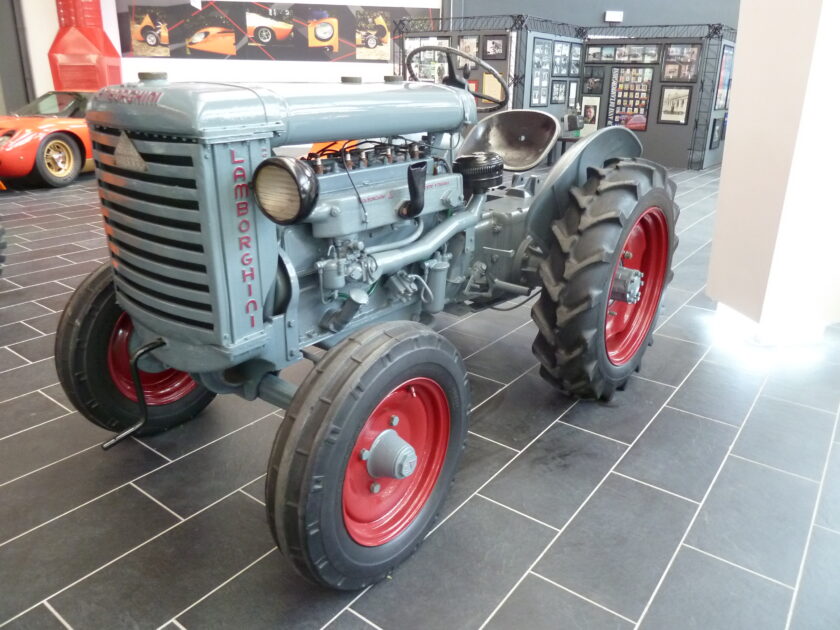
The first of these machines was powered by a gasoline-fueled four-cylinder Morris engine producing over 100 horsepower, modified to run on kerosene with reduced power to improve reliability. The machine was an immediate success, with 200 units sold in one year.
In 1949, a new carioca was introduced, equipped with a 40-horsepower six-cylinder Morris engine. However, Ferruccio Lamborghini disliked these machines—both aesthetically and conceptually—so even before exhausting his stock of Morris engines, he began designing the “L 33” with technicians Alfonso Carassiti and Giorgio Guazzaloca. This was undoubtedly the best tractor ever built using surplus parts. It sold well, but failed to convince Lamborghini’s two partners, who withdrew, leaving him to continue on his own—a decision that led to the creation of his great and still-legendary company.
Title: The first vintage Lamborghini tracked tractors in yellow and gold livery
Autore: Redazione






